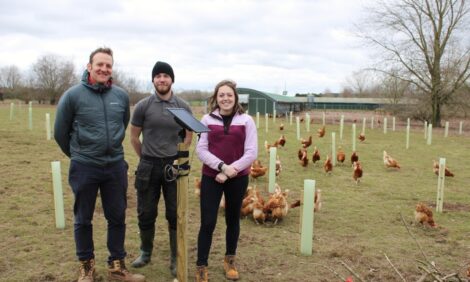



Illegal Imports Threaten African Poultry Production
SOUTH AFRICA - At the start of this year, Prof Celia Abolnik of the University of Pretoria in South Africa has been lauded as one of the top five African female researchers of 2016 thanks to her work on avian respiratory viruses. Glenneis Kriel spoke to her about the major challenges facing African farmers.Professor Abolnik, you earlier this year received a Kwame Nkruma Scientific Award, acknowledging you as one of the top five female scientists in Africa. What does this award mean to you?
The recognition is appreciated as it shines light on the work I have been devoting myself to since I started working on my research portfolio in 2003. In South Africa, it has resulted in me being invited to parliament this year, where the Minister of Science and Technology congratulated me during her Budget Vote speech.
The award nevertheless comes with great responsibility. The African Union expects winners to be their ambassadors and inspire young girls to pursue careers in science.
Why exactly did you receive the award?
It is for outstanding achievements in Science and Technology. It was awarded to me for the work I have done since 2003 on avian respiratory diseases, such as Avian Influenza and Newcastle Disease.
Why did you decide to specialise in avian respiratory diseases?
While working at Onderstepoort Veterinary Institution, my boss at the time, Dr Gerrit Viljoen, posed a question over whether South Africa had unique strains of Newcastle disease. I started researching the subject, but found little data on African or South African poultry viruses. My interest grew and expanded from there.
So what have you found? Are there unique South African strains of disease?
No. I found most new strains to be imported into the continent, because border control and the movement of animals in African countries in general is not as well-regulated or efficient as they are in most first world countries. Because of this, disease also tends to spread more easily between neighbouring countries when there is an outbreak.
Can you give an example of this?
South African producers suffered huge losses due to a Newcastle Disease outbreak that started in the North West Province in 2013. The outbreaks were notable because Newcastle Disease had been absent from the region for some time. Closer inspection revealed it was a new strain.
One of the projects on my desk at the moment is to trace the movement of the disease and try and identify how it got into the country. So far, we have established that the strain originated in South East Asia and that it moved from Mozambique into other SADC countries and eventually to South Africa.
It seemed to have entered Mozambique via the port in Maputo. Since a shipping route is the most likely source, it’s possible that dumping of infected galley waste or even fighting cocks kept by the crew might have been the source of the infection, but this remains speculative.
Beside poor border control, why are these disease such a threat to African production?
While there has been a significant increase in the number of commercial production systems, the majority of poultry farmers on the continent are still subsistence farmers. They have backyard farming systems, where birds have to fend for themselves to find food, water and shelter.
These birds not only play a large role in boosting food security of families, but also have a social and economic role to play. When children go to school, birds are sold to pay school fees and when there is a festivity, such as Christmas, birds are slaughtered as the main meal for the celebration.
The problem with this production system is that there are no biosecurity measures to reduce the risk of birds catching diseases from potential sources of infection. Birds are also not vaccinated, since people do not have money to do so and in many cases vaccinations are not available in rural locations.
Do you think the use of indigenous poultry breeds help to reduce these risks?
No, I don’t think enough research has been done to prove that. Indigenous birds are most likely just as vulnerable to diseases as their more modern cousins. The indigenous breeds, however, have the advantage of being better adapted to the scavenging lifestyle associated with backyard farming in rural villages. They seem to be able to thrive with fewer inputs than commercial production breeds.
What are the main disease threats that African farmers struggle with?
The World Organisation of Animal Health (OIE) and the World Health Organisation (WHO) have identified Newcastle and Avian Influenza as the main disease threats, because these diseases are highly infectious and extremely lethal. They have the ability to wipe out whole flocks in a matter of days.
Gumboro and Newcastle are big problems across the continent, while highly pathogenic avian influenza is restricted to West and North Africa. Other diseases such as coccidiosis, bacterial infections, Marek’s disease, infectious bronchitis and infectious laryngotracheitis also cause significant problems.
Do you think there is room for African producers to expand production?
Yes, there is a lot of room to expand production and raise production efficiencies. Governments would however have to become more involved to unlock this potential, which I do not see happening as most have more pressing social matters that receive financial priority.
How would governments be able to help unlock this potential?
Firstly, they would need to improve border protection to prevent diseases from entering the country. Secondly, they can launch training programmes to educate farmers on ways to protect birds from diseases and increase production efficiency. Lastly, they can role out vaccination programmes to help prevent disease outbreaks.









